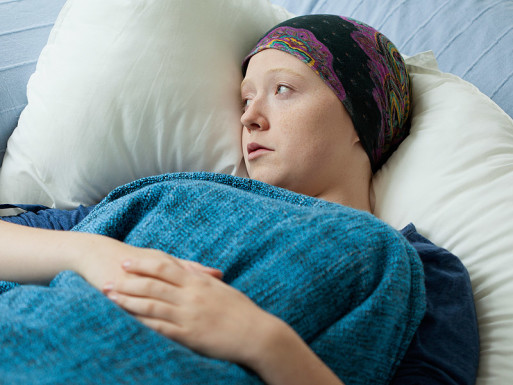
Credit: newsnetwork.mayoclinic.org
Ovarian cancer is the fifth most common cancer among women. Jessica Tandy, Coretta Scott King, Dinah Shore and Gilda Radner were just a few of the prominent public figures whose lives were tragically cut short by the disease. SevenPonds features Monday Hearts for Madalene, an ongoing celebration of the life of Madalene Rodriguez, who passed away from ovarian cancer in 2006. Madalene’s partner Page Hodel continues to create a handmade heart every Monday to honor Madalene’s memory. Those whose lives have been affected by ovarian cancer know the feeling of helplessness that accompanies the diagnosis of this disease.
Ovarian cancer, a malignancy that develops in the ovaries, historically has had a poor prognosis. The disease has no symptoms in its early stages and has a tendency to grow quickly. Further, once symptoms appear, they are often vague and easily attributed to other conditions. For this reason, many ovarian cancers have metastasized by the time they are found. Five years after diagnosis, only about 45 percent of ovarian cancer patients are still alive.
Current screening methods focus on ultrasound examinations of the ovaries and blood tests to measure CA125, a “tumor marker” that can indicate early-stage disease. However, these screening methods have proven either ineffective or downright harmful: They have not lowered death rates and sometimes deliver false positive results, leading to cancer-free women undergoing unneeded surgery.
Now, however, there is a glimmer of hope in the form of a study published in “The Lancet” this month. A new version of a screening test for ovarian cancer finally may have the potential to reduce deaths. The new screening test also uses the CA125 tumor marker, but with the addition of a new mathematical formula called the Risk of Ovarian Cancer Algorithm, which calculates a risk score that takes into account a woman’s age and degree of change in CA125 over time.

Credit: medscape.com
The study compiles findings from 14 years of research observing more than 200,000 women in the United Kingdom, and preliminary results are promising. Dr Usha Menon, a co-author of “The Lancet” article and head of the gynecological cancer center at the University College London, cautions that the study passed only two of three tests of statistical significance, which means that the effectiveness of the screening test may be due to chance. However, Dr. Menon says just a few more years of monitoring participants will deliver conclusive results.
Participants in the study were women between the ages of 50 and 74 who had an average risk of ovarian cancer. The women were randomly assigned to one of three groups. The first was a control group that received no screening. The second group had the CA125 screening test interpreted with the Risk of Ovarian Cancer Algorithm. The women with abnormal results underwent other tests and, in some cases, surgical removal of the ovaries. The third group underwent ultrasound scans of the ovaries once a year, and, if abnormalities were detected, additional follow-up tests.
This analysis found 20 percent fewer deaths in the women who received the CA125 screening with the Risk of Ovarian Cancer Algorithm.
The first analysis of the groups found a decreased number of deaths in both the CA125 and ultrasound groups, with no statistically significant differences between the two groups. The second analysis excluded women in whom ovarian cancer was discovered shortly after they entered the study. This analysis found 20 percent fewer deaths in the women who received the CA125 screening with the Risk of Ovarian Cancer Algorithm. Differences in death rates emerged in around the seventh year of the study because of the time if takes for the cancer to grow.
A few more years of follow-up are needed before the benefits of the CA125 algorithm can be confirmed. Dr. Karen H Lu, chairwoman of gynecologic oncology and reproductive medicine at the University of Texas MD Anderson Cancer Center says the study is “a solid triple, but not a home run.”
Let’s hope that in a few years, it will indeed be a home run.

 A New Screening Test For Ovarian Cancer
A New Screening Test For Ovarian Cancer


 How Dare You Die Now!
How Dare You Die Now!
 Debating Medical Aid in Dying
Debating Medical Aid in Dying
 “Help Me, Helen”
“Help Me, Helen”














